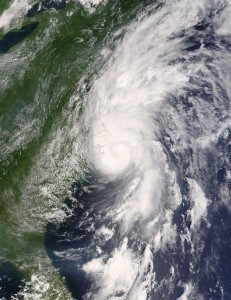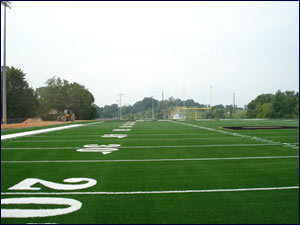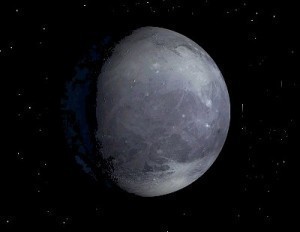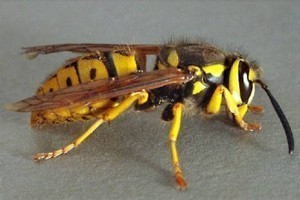Size of a Hurricane
The hurricane size is measured by its diameter and the gale force winds.  The diameter of hurricane winds is usually 100 miles. The gale force diameter is around 400 miles. However, storms are also measured in other ways.
The diameter of hurricane winds is usually 100 miles. The gale force diameter is around 400 miles. However, storms are also measured in other ways.
The Saffir-Simpson Scale
Hurricanes are also gauged by their speed and intensity. In North America, the Saffir-Simpson system is the measurement scale being used. There are two versions of this scale; the Saffir-Simpson Hurricane Scale and the Saffir-Simpson Hurricane Damage Intensity Scale. The Saffir-Simpson Hurricane Scale bases its measurement by intensity.
Category 1 is the weakest and Category 5 the most powerful. Because the hurricane size fluctuates, the labeling changes. A Category 1 hurricane can be raised to a category 2 or higher. The reverse is also true. The influencing factors are the wind speed, barometric pressure and storm surge.
The Saffir-Simpson Hurricane Damage Intensity Scale uses the same criteria as the Saffir-Simpson Hurricane Scale. But it includes the cost of property damage. Flooding is also accounted for.
Hurricane Categories
Category 1 hurricanes may result in slight flooding; Category 2 hurricanes can uproot trees; Category 3 hurricanes are characterized by some damage to buildings. Category 4 hurricanes will damage the roofs of houses. Severe flooding will also be experienced. Category 5 hurricanes will result in massive flooding and destruction of property.
Deadliest Hurricanes of All Time
If hurricane size is measured by death toll, the Great Hurricane of 1780 is at the top of the list. The storm passed the Lesser Antilles on October 10. Packing speeds and winds of over 200 mph (300 km/h) the hurricane killed over 25,000 people. The hurricane also hit Barbados, Saint Lucia and other islands.
Hurricane Mitch is the second deadliest of all time, killing 18,000 people, mostly in the Honduras. Mitch carried winds of up to 80 mph (290 km/h). The hurricane devastated the Honduras on October 28.
The Galveston Hurricane of 1900 struck Cuba in August. The winds and flooding killed between 6,000 – 12,000 people. At its peak, the hurricane had winds of 135 mph (215 km/h).
Hurricane Fifi is the fourth deadliest. The hurricane hit Belize on September 19, 1974. The hurricane size (strength wise) was 110 mph (175 km/h), Over 10,000 people perished.
The 1930 hurricane that hit Lesser Antilles killed thousands of people. Estimates range from 2,000 to 6,000. A Category 4 hurricane, Flora tore through Cuba and Haiti in 1963, killing 8,000 people.
Other Powerful Hurricanes
The Pointe-à-Pitre Bay Hurricane of 1779 killed over 6,000 people. 4,100 people perished in the Newfoundland Hurricane of 1775. 4,000 died during the “Okeechobee” Hurricane of 1928.
For sheer size, the largest ever seen over the Atlantic was Hurricane Greta. While in the Atlantic, the winds spanned an area 1,200 miles (1,930 km) wide. However, the hurricane weakened before it made landfall. In terms of damage, it was not as severe as the other storms listed here.
The hurricane size and scale described here is not necessarily applicable in other countries. In some Asian nations, hurricanes are called typhoons or cyclones. Different measurements are also used.





